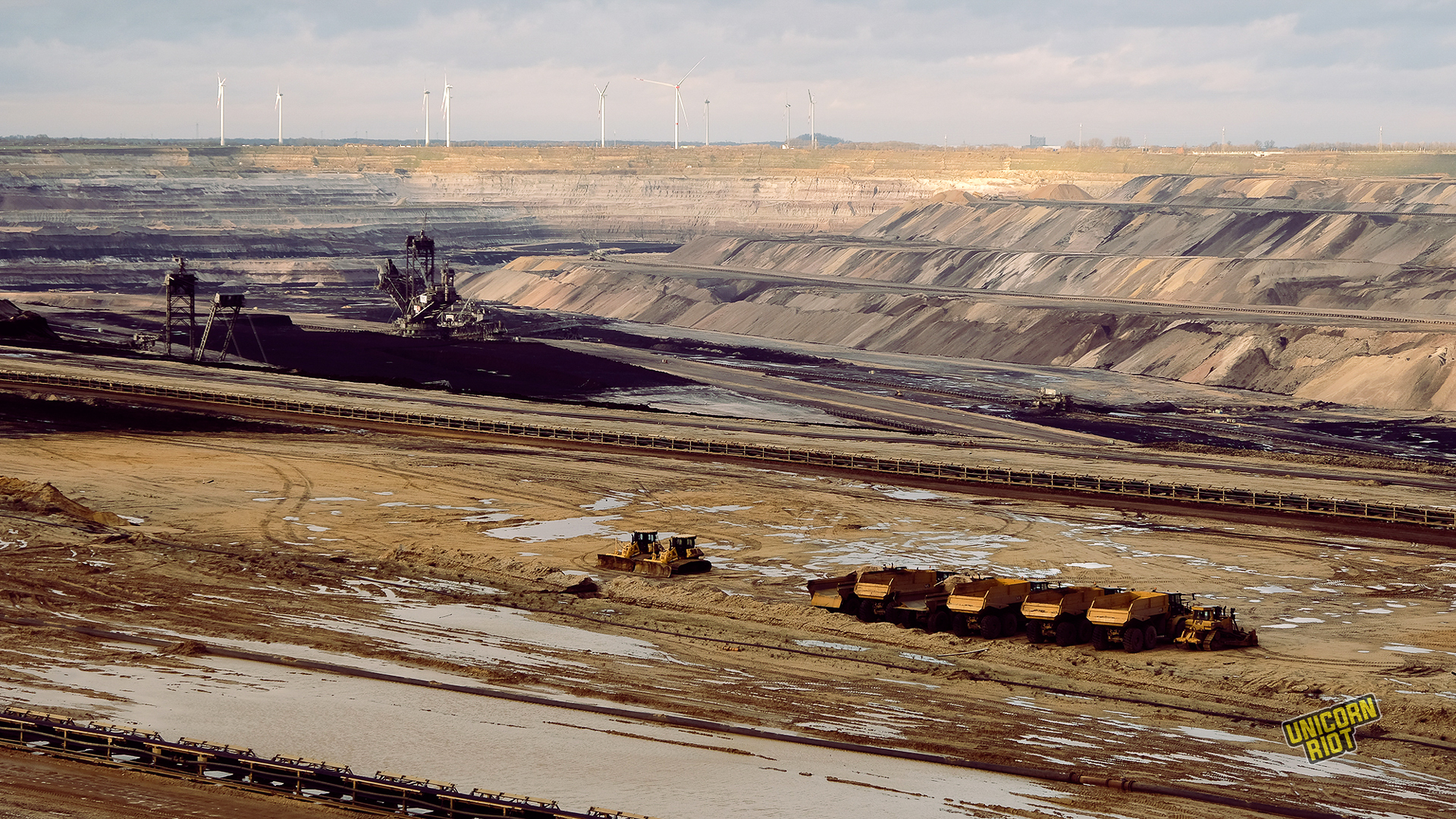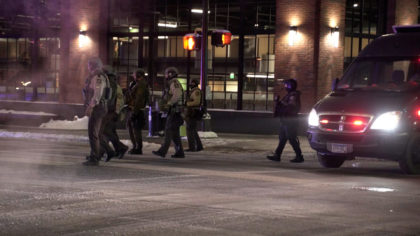Mass Protests by Climate Activists Follow Eviction of Occupied German Village
Lützerath, North Rhine-Westphalia, Germany – Thousands protested the planned expansion of an immense open-pit coal mine, one of the largest in Europe. The forceful eviction of climate activists who were occupying Lützerath for more than two years and the demolition of the village itself became a call to action, sparking the largest protest yet seen in the region. The sheer number of people, together with the presence of famed Swedish climate activist Greta Thunberg, attracted the attention of both local and international media, helping to broadcast climate activists’ searing criticism of the German government’s energy policy, which has used the war in Ukraine as an excuse to continue burning coal.
Background to the Protests
The Garzweiler open-pit coal mine, operated by energy giant RWE, has expanded to consume around 15 villages since the 1960s. This mine and others like it, including the Hambach mine, provide lignite, or brown coal, the dirtiest type of coal. The coal is delivered via trains from the mine to several coal-fired power stations in the region, including one built in 2020.
The decision to destroy Lützerath was a result of a “compromise” deal struck between the government and energy firm RWE last year. In exchange, RWE agreed to stop mining coal by 2030 rather than the previously promised 2038. This agreement was all the more disappointing for environmentalists because it was made by the Greens, with that party’s minister of economy, Robert Habeck, serving as the face of the controversial decision.
Germany’s outward image as a leader in green energy — with Green Party members currently in the coalition leadership of the government — has been called into question locally and abroad. A group of 500 scientists released a condemnation of the eviction of Lützerath, highlighting the contradictions in Germany’s energy policy, which would fail to comply with the Paris Climate Accords at current levels of coal extraction.
According to climate activists, the compromise is simply dangerous as it threatens the climate goal of preventing a 1.5° Celsius (2.7° Fahrenheit) rise in global temperatures. Viewed through the lens of looming climate catastrophe, decisions like this one are paid for by the global South, and activists argue that the country’s economic justifications can no longer serve as an excuse.
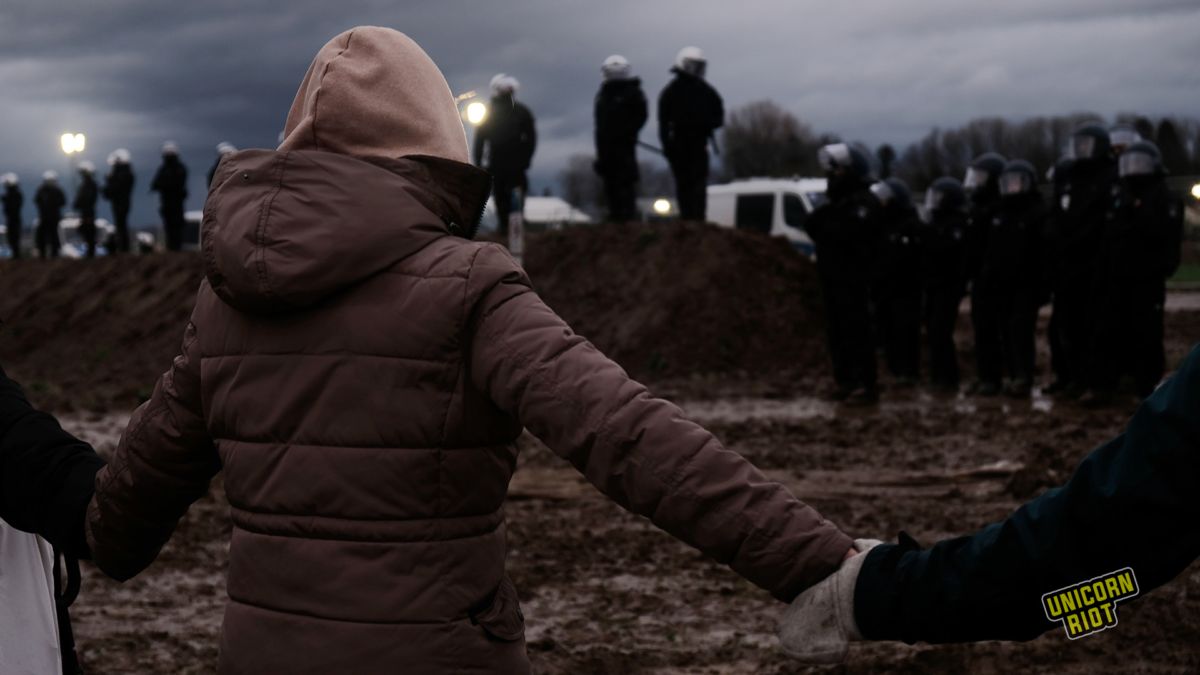
Protester Direct Actions and Police Violence Escalates
Over the past two years, Lützerath became a symbolic battleground for climate justice. But for anyone present at the January 14 mass demonstration, the battleground was far from a metaphor. Large open fields surrounding the open-pit mine were filled with people and clashes between protesters and police, all steeped in mud, as much a part of the landscape as the plumes coming from the chimneys of the adjacent coal power plants. Terrified hares ran through the disarrayed crowd; in one poignant instance passing a group of protesters chanting “we are nature defending itself.”
Although the large demonstration marked a culminating point in the resistance against coal, this momentum was gained only because of the ceaseless activity of coalitions of activists, some present at the site for years, most of them not locals. During this time, dozens of activist groups big and small, such as Lützerath Bleibt, Extinction Rebellion, Fridays for Future, and Ende Gelände, to name just a few, got involved in the occupation of the village. The demolition of Lützerath was fuel for residual anger among activists.
The demonstration began from the town of Keyenberg, about 1.5 miles from Lützerath, and became chaotic as soon as the crowd strayed from the planned route towards the edge of the mine and ultimately towards Lützerath, fenced off and heavily guarded by hundreds of riot police since only a few days prior. There were more people than expected — a range of environmental groups and a variety of chants — everybody trying to move around as much as possible if only to warm themselves against the bitter cold. In contrast, police cars were orderly lined up for kilometers and enclosing the protesters; arriving on the field, you noticed these before spotting the open pit (which says something about the scale of their operation).
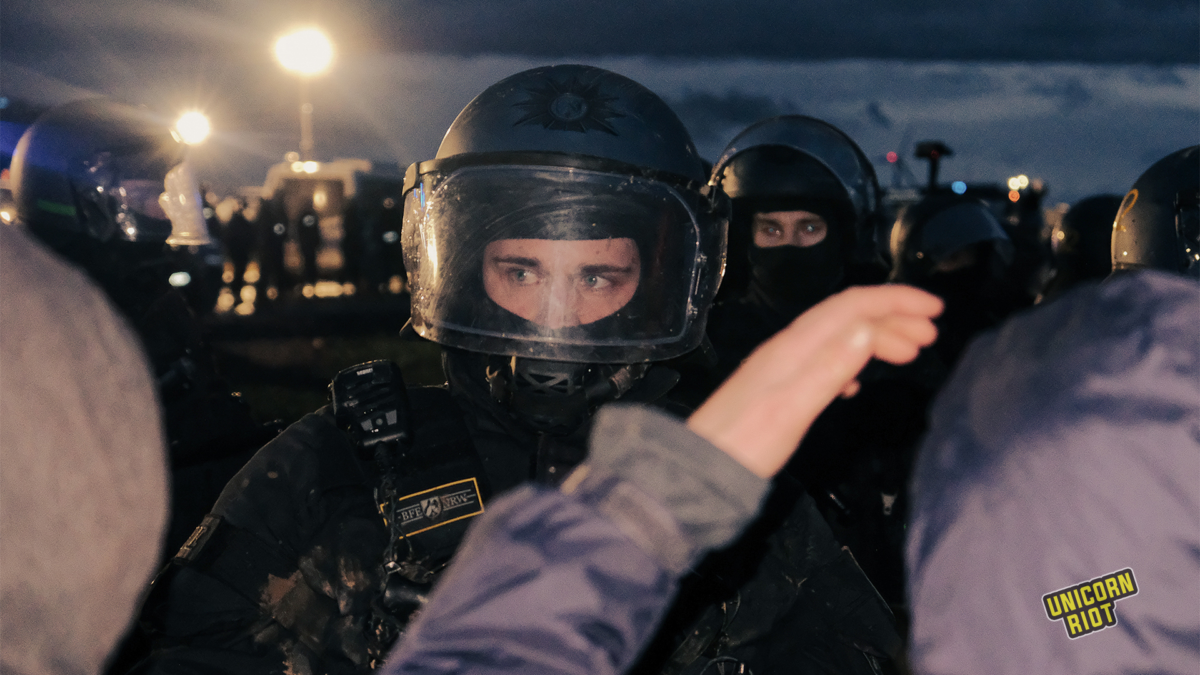
Likewise, the police actions also had a symmetry to them. Heavily armored figures were running in columns, splitting and rearranging formations, encircling any group within their reach and reaching for their batons in unison. This careful choreography resulted in dozens of injuries, according to activists. The blatant display of violence against overwhelmingly peaceful protesters was done at the behest of the RWE, spokespersons for the protest groups insist. Police say 12 people were arrested and nine taken to the hospital. “Fortunately no one was seriously injured,” police claimed. Activists contradicted this and alleged many more injured, some seriously.
Thousands of police had converged on the mining area from 14 of Germany’s 16 states. The charge that they are acting as henchmen for a private energy corporation is one of the main grievances of climate activists, particularly as the police brutality at the demonstrations was widely shared and condemned. The accusation is metonymic in its nature as the police force represents a punishing hand of a larger organizational body. If the activists are right, even if the German government is the state’s head, the RWE is the neck that turns it.
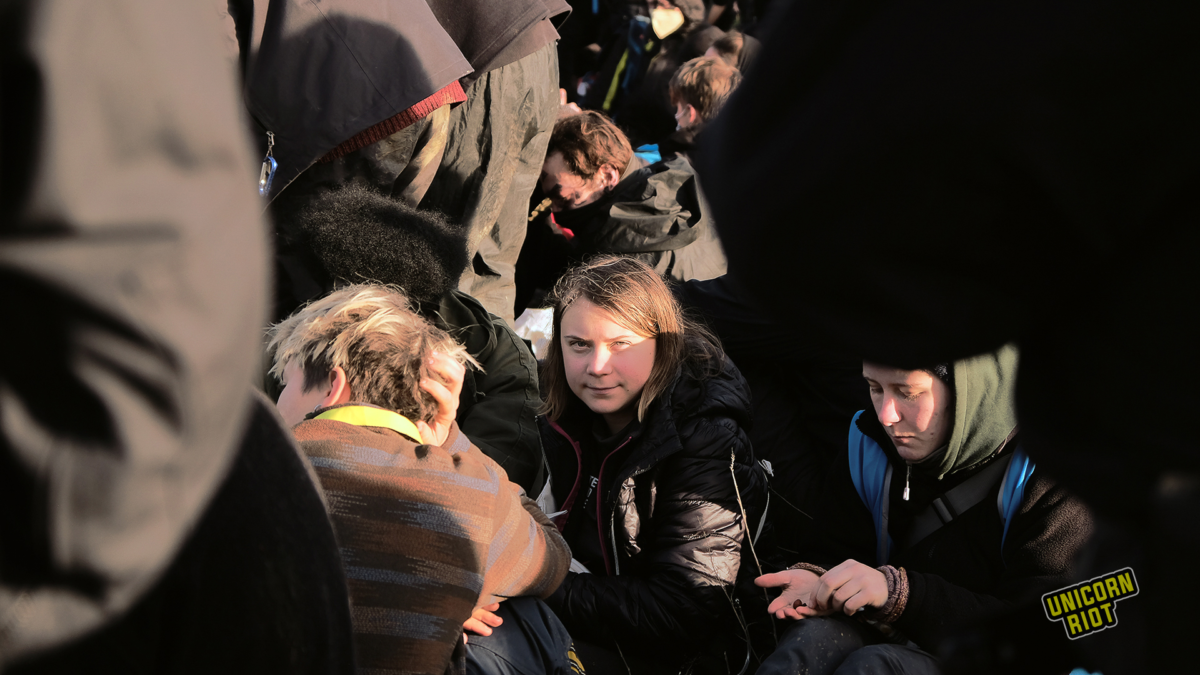
The presence of Greta Thunberg at the protest helped internationalize the issue and reminded the crowd that Germany is one of the biggest polluters in Europe. Of course, the Swedish activist wasn’t the only one who showed up from abroad to support the resistance – there were many protesters who came from various cities in Germany, the Netherlands, Spain, and France, among others.
Unlike some celebrities (at least those who, like Thunberg, seem to possess the ability to merge with the crowd if needed), activist groups are usually easy to spot, even in the chaotic whirl of the protest. The yellow letter X, for Extinction Rebellion, was big enough to shield more than one person against, at least, a moderate blow or flying object. Others carried flags. The white jumpsuits of Ende Gelände stood out against the crowd — black is a more sensible choice as, for one, it helps to remain anonymous.
Many who weren’t wearing scarves on their faces painted them in geometric shapes or black lines to defy facial recognition, tricks that fool the expensive police equipment. Anonymity notwithstanding, some that joined the protests resurfaced as characters (a person dubbed by the Internet as “the mud wizard” being the most obvious example). Despite these details, everyone that gathered on the field was aware that the situation was not theater.
Water cannons made it clear that the police were shifting to the offensive under the cover of darkness. The crowds were pushed from the site, with most starting long journeys back home. The rest returned to the activist camp in Keyenberg to prepare for the actions planned for the coming days. The central structure at the camp is a circus tent and open-air kitchens. This is a signature of the camps set up by Ende Gelände, whose members undergo training and set out to disrupt the coal mines. These are approached from several directions, in formations called ‘fingers’ whose aim is to reach the open-pit mines and sabotage their operations.
A few days later, on January 17, a series of direct actions against several different mines in the Rhineland coal region shut down operations for hours. A march headed by a sound system van playing protest songs left Keyenberg at around 11 a.m. headed south on the L12 road near the edge of the Garzweiler mine. Despite police warning the crowd to stay on the road, around 400-500 mostly Ende Gelände activists suddenly ran towards the mine at the point at which the road drew closest to Lützerath.
After evading the hundreds of riot police swinging batons, charging on horses, and commanding barking dogs, the activists were eventually encircled near the mine’s edge. Police surrounded the group for over two hours while they decided how to process them and waited for police vans to arrive. The activists were eventually brought by force to an ID check and released later that evening.
Though Lützerath has now been fully evicted and is certain to be destroyed, activists remain in the Keyenberg camp. Police are expected to begin winding down their massive operation in the area, leaving it to “RWE to carry out the rest of the eviction,” said Zora Fotidou, a spokesperson for “Lützerath Lebt” (Lützerath Lives). This, according to the activists, creates new opportunities for resistance.
Germany Anti-Coal Mine coverage:
- Mass Protests by Climate Activists Follow Eviction of Occupied German Village - January 30, 2023
- Police Evict Environmental Protesters from Lützerath, Germany - January 16, 2023
- Climate Activists Disrupt German Coal Mine Expansion - November 16, 2021
- Tree House Villages Defend Ancient German Forest Against Expanding Coal Mine - September 9, 2019
- Direct Action Shuts Down Coal Infrastructure in Germany - June 21, 2019
- Touring Activists Build Momentum Toward Climate Justice - May 8, 2019
- Journalist Dies During German Police Sweep of Hambach Forest - Sept. 19, 2018
- Police Move to Clear Activists from Ancient Forest on Behalf of Coal Mining Company - Sept. 13, 2018
- Networks of Resistance Pt. 1 – ZAD, Bure, Hambach Forest
- Direct Action Shuts Down Coal Mine in Germany (w/ Interview) – Deprogram Ep. 16 - August 21, 2015
Follow us on X (aka Twitter), Facebook, YouTube, Vimeo, Instagram, Mastodon, Threads, BlueSky and Patreon.
Please consider a tax-deductible donation to help sustain our horizontally-organized, non-profit media organization:

